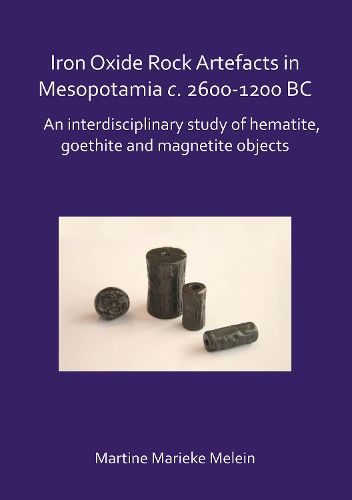Readings Newsletter
Become a Readings Member to make your shopping experience even easier.
Sign in or sign up for free!
You’re not far away from qualifying for FREE standard shipping within Australia
You’ve qualified for FREE standard shipping within Australia
The cart is loading…






The flourishing civilisations of Mesopotamia, nowadays Iraq and Syria, imported all kinds of materials from the surrounding regions. Iron oxide rock (hematite, goethite and magnetite) was very popular for weight stones and cylinder seals around 2000 BC. This research aims to determine the region of origin for the raw material, what made people start using iron oxide rock, and what led them to stop using it. To answer these questions, a multidisciplinary approach was applied. Geology and archaeology were combined to identify Northern Syria as the region of origin. Archaeometric research of the production process showed that technological change concurred with the start and end of the use of iron oxide rock. Cuneiform texts yielded, among other information, the earliest description of magnetism known to mankind. Furthermore, element and mineral composition of 50 artefacts from three Dutch collections were determined with modern, non-destructive analysis techniques.
$9.00 standard shipping within Australia
FREE standard shipping within Australia for orders over $100.00
Express & International shipping calculated at checkout
The flourishing civilisations of Mesopotamia, nowadays Iraq and Syria, imported all kinds of materials from the surrounding regions. Iron oxide rock (hematite, goethite and magnetite) was very popular for weight stones and cylinder seals around 2000 BC. This research aims to determine the region of origin for the raw material, what made people start using iron oxide rock, and what led them to stop using it. To answer these questions, a multidisciplinary approach was applied. Geology and archaeology were combined to identify Northern Syria as the region of origin. Archaeometric research of the production process showed that technological change concurred with the start and end of the use of iron oxide rock. Cuneiform texts yielded, among other information, the earliest description of magnetism known to mankind. Furthermore, element and mineral composition of 50 artefacts from three Dutch collections were determined with modern, non-destructive analysis techniques.